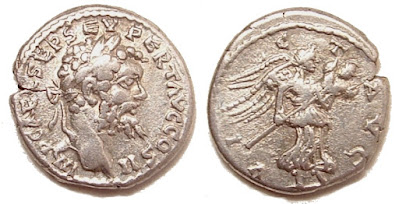A few years ago, after reading Gitler and Ponting's monograph on chemical analyses of Severan denarii, I began to suspect that the eastern attributed coin attributions weren't wholly correct. They identified that some of the coins assigned to Laodicea had a composition closer to the Rome mint issues.
Reading Bland's work on the Antioch coins of Gordian III, where he summarises the previous output of the Antioch mint, he accepts that Butcher is probably correct in his proposed reattribution of location.
Eventually the Emesa mint is closed and succeeded by a new establishment at Laodicea. This change is thought to occur at the change in the termination of the obverse legend from COS II to IMP followed by a number.
Butcher, however, observed that stylistically there is little or no change through from Niger through Severan Emisa issues and early Laodicea coins. This also includes a consideration of the repertoire of reverse types. It only changes when there is a distinctive alteration in "Laodicea" style at IMP VIII, the so called "new style". It is at this time the metal alloy composition also changes.
Butcher suggests that, other than some rare Alexandrian coins, the bulk of the eastern coins of Severus are from a continuation of the Antioch mint that Niger used. The new style Laodicea coins he places at an un-named location closer to Rome, perhaps in the Balkans.
Bibliography
Bland, R, The Coinage of Gordian III from the Mints of Antioch and Caesarea (RNS SP 60, 2023)
Butcher, K, Coinage in Roman Syria: 64 BC - AD 253 (RNS SP 34, 2004), abbreviated as CRS above
Gitler, H, and Ponting, M, The Silver Coinage of Septimius Severus and His Family, 193-211 AD (Glaux 16, 2003)




